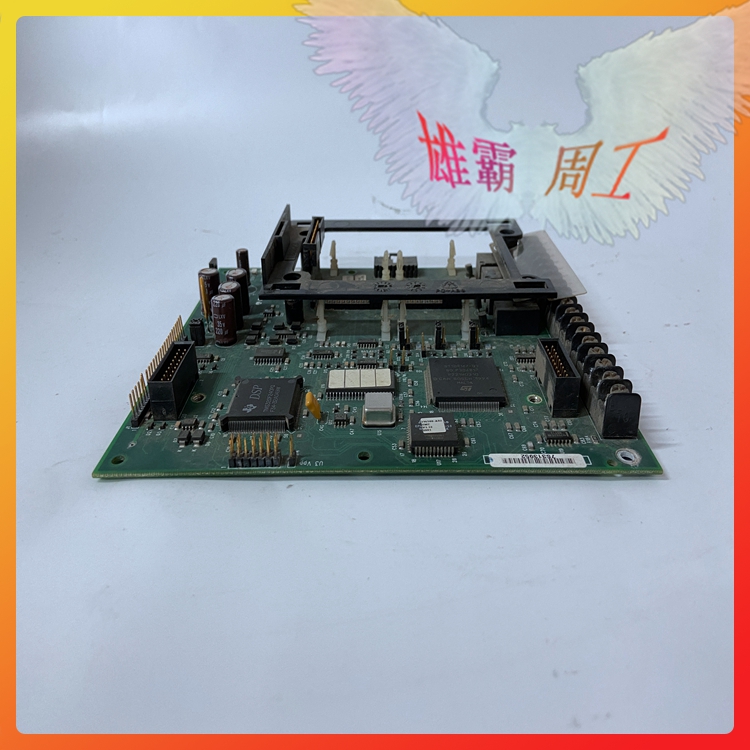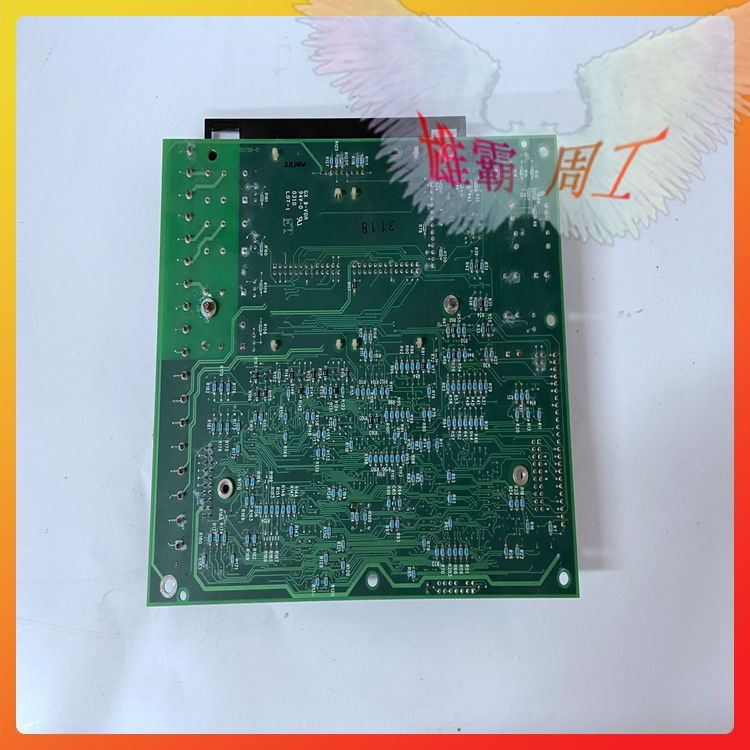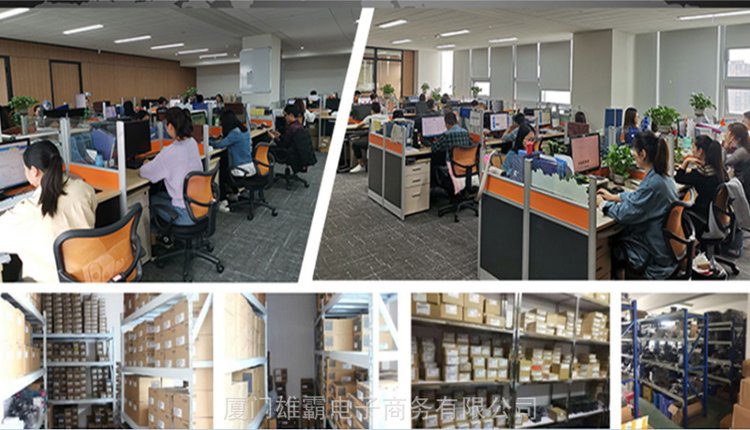1336-BDB-SP49D A-B 处理器单元 大量库存投资
产品信息。
品牌名称: A-B
型号:1336-BDB-SP49D
保修期:12个月
尺寸:厘米/毫米
重量:磅/千克
颜色:黑色/白色/灰色
货币:欧元/人民币/美元
版本:C/D/E/F
电流:A/mA/uA
电压:VDC
原产国:瑞典
发货地:福建
低订单:1件/件
运输方式:海运、空运、陆运
供应能力
生产能力:600
包装:新纸箱
交货日期:3天
快速询价
励磁控制器的工作原理:
励磁装置主回路部分





主回路的组成和功能
装置主回路完成整流和灭磁两大功能,系统采用三相全控桥可控硅整流电路,向同步电动机转子绕组提供直流励磁电流。灭磁回路由可控硅7、8KGZ与二极管GZ反并联组成,实际上组成为一个大功率电子开关,完成同步电动机在异步起动过程中串入起动电阻,起动结束后自动切除,保证同步电动机在异步起动期间,转子励磁绕组既不开路也不短路,从而避免励磁绕组承受过电压和过电流。
励磁装置控制部分:
系统控制部分包括S7200PLC、Pro-face触摸屏、KGLF-2型微机励磁控制器三部分组成。 PLC主要完成继电回路逻辑控制工作方式切换、运行时PI调节以及对外通讯等工作,Pro-face触摸屏主要完成系统参数设置和运行时故障、工作时间、设定运行参数信息查询,Pro-face触摸屏具有励磁电流和励磁电压录波曲线信息查看。
KGLF-2型励磁控制器里由主机MC87C51和副机AT89C51单片机组成。励磁控制器主要完成频率测量及投励、脉冲形成、故障检测及处理。
1转子感应电压频率的测量
同步电动机起动时, 转子感应电压的频率随着转速的上升逐渐下降,同步电动机一旦起动, 单片机就立即检测转子感应半个周波的时间, 从20ms开始, 数码管记“9”,中间每增加20ms, 数码减1, 到200ms时数码管显示“0”。同步电动机在异步起动过程中,当转子转速达到同步转速的90%时,转子感应电压的频率5Hz,周期0.2s,半周时间为100ms,计算机一旦检测到该值,立即投全压。投全压后,电动机的转速将继续上升,当转速增加到同步转速的95%时,转子感应电压的频率为2.5Hz,周期为0.4s,半周时间为200ms ,计算机检测到此值,迅速进入整流程序, 输出脉冲, 装置投入励磁, 同时接通投励工作指示, 关掉低压灭磁并开放失磁保护和失步保护等。
2脉冲形成
同步信号Ta、W3 提供正偏移,及励磁调节器的输出信号Uk,三者通过运算放大器综合处理后作为单片机外部中断请求INT0的输入信号,当INT0从1变0时, 单片机接受中断, 立即发出组脉冲去触发1# 可控硅,同时给6#可控硅补一个脉冲。以后每间隔60°发下一组脉冲, 触发相应的可控硅,直至一个周期六组脉冲发完, 再等待下一次中断。改变Uk的大小就改变了中断申请的时刻, 达到控制角的目的。 为了提高整流电压波形的对称度,系统还不断监测电网的频率,随时对60°定时进行修正,确保整流电压波形对称,这样产生的脉冲精度高, 无需外部调整, 且稳定可靠。
3故障保护
系统具有进线电源空开跳闸、电源掉相、快熔熔断、欠磁、失步、过流、起动超时等保护。这些故障主要由辅机监控检测,一旦确认故障发生,辅机立即通知主控计算机,主机接收此信号后迅速作出相应的故障处理,发出故障显示和声响信号,接通高压油断路器分闸回路,同步电动机紧急停车。同时系统推β逆变运行,将励磁绕组储存的能量回馈电网,延时5~6s后封锁脉冲。
故障发生后由辅机记忆故障原因,并显示故障代码,以便查询处理。
Operating principle of excitation controller:
Main circuit part of excitation device
Composition and function of main circuit
The main circuit of the device performs two major functions:rectification and deexcitation.The system uses a three-phase fully controlled bridge thyristor rectifier circuit to provide DC excitation current to the rotor winding of the synchronous motor.The deexcitation circuit consists of a thyristor 7,8KGZ,and a diode GZ in reverse parallel.In fact,it is composed of a high-power electronic switch,which completes the series connection of the starting resistance during asynchronous starting of the synchronous motor.After starting,it is automatically cut off,ensuring that during asynchronous starting of the synchronous motor,the rotor excitation winding is neither open nor short circuited,thereby preventing the excitation winding from withstanding overvoltage and overcurrent.
Excitation device control part:
The system control part consists of S7200 PLC,Pro face touch screen,and KGLF-2 microcomputer excitation controller.The PLC mainly completes the switching of relay circuit logic control working mode,PI adjustment during operation,and external communication.The Pro-face touch screen mainly completes system parameter setting and query of fault,working time,and set operating parameter information during operation.The Pro-face touch screen has excitation current and excitation voltage recording curve information viewing.
The KGLF-2 excitation controller consists of a host MC87C51 and a slave AT89C51 microcontroller.The excitation controller mainly completes frequency measurement and excitation,pulse formation,fault detection and processing.
Measurement of rotor induced voltage frequency
When a synchronous motor is started,the frequency of the rotor induced voltage gradually decreases as the rotational speed increases.Once the synchronous motor is started,the microcontroller immediately detects the time of the rotor induced half cycle.Starting from 20ms,the digital tube records"9",and every 20ms increase in the middle,the digital tube decreases by 1.When it reaches 200ms,the digital tube displays"0".During asynchronous starting of a synchronous motor,when the rotor speed reaches 90%of the synchronous speed,the frequency of the rotor induced voltage is 5Hz,the cycle is 0.2s,and the half cycle time is 100ms.Once the computer detects this value,it immediately applies full voltage.After the full voltage is applied,the rotational speed of the motor will continue to rise.When the rotational speed increases to 95%of the synchronous rotational speed,the frequency of the rotor induced voltage is 2.5 Hz,the cycle is 0.4 s,and the half cycle time is 200 ms.The computer detects this value,quickly enters the rectification program,outputs pulses,and the device is energized.At the same time,the excitation operation indicator is turned on,the low voltage deexcitation is turned off,and the loss of excitation protection and out of step protection are turned on.
2 pulse formation
The synchronous signals Ta and W3 provide a positive offset and the output signal Uk of the excitation regulator.After comprehensive processing by the operational amplifier,the three signals serve as input signals for the external interrupt request INT0 of the microcontroller.When INT0 changes from 1 to 0,the microcontroller accepts the interrupt and immediately sends the first set of pulses to trigger the 1#thyristor,while supplementing the 6#thyristor with a pulse.After that,send a set of pulses every 60°interval,trigger the corresponding thyristor,until six sets of pulses are sent out in a cycle,and then wait for the next interruption.Changing the size of Uk changes the timing of the interrupt application,achieving the goal of controlling the angle.In order to improve the symmetry of the rectifier voltage waveform,the system also continuously monitors the frequency of the power grid and corrects the 60°timing at any time to ensure that the rectifier voltage waveform is symmetrical.This generates pulses with high accuracy,without external adjustment,and is stable and reliable.
3 Fault protection
The system has protections such as incoming power supply air switch tripping,power supply phase loss,fast fuse fusing,under excitation,out of step,overcurrent,and startup timeout.These faults are mainly monitored and detected by the auxiliary machine.Once it is confirmed that a fault has occurred,the auxiliary machine immediately notifies the main control computer.After receiving this signal,the main machine quickly makes corresponding fault handling,sends out fault display and audible signals,connects the high-voltage oil circuit breaker opening circuit,and the synchronous motor stops in an emergency.Simultaneous system pushβDuring inverter operation,the energy stored in the excitation winding is fed back to the power grid,and the pulse is blocked after a delay of 5-6s.
After a fault occurs,the auxiliary machine remembers the cause of the fault and displays the fault code for easy query and processing.


其他相关型号:
| ABB | 07DC91 | GE | 369-H1-R-M-0-0-0-E | TRICONEX | 3721 | Bently 3500/05 | |||
| ABB | 07KT97 | GE | 469-P1-HI-A20-T | TRICONEX | 4351B | Bently 3500/15 | |||
| ABB | 07KT98 | GE | ACC-5595-208 | TRICONEX | 3625 | Bently 1900/65 | |||
| ABB | TA0C-2-240 | GE | DS200DCFBG1BNC | TRICONEX | 3351 | Bently 3500/22M | |||
| ABB | LDGRB-01 | GE | DS3800HFXA1D1B | TRICONEX | 3481 | Bently 3500/25 | |||
| ABB | XVC517AE02 | GE | IC695CRU320 | TRICONEX | CM2201 | Bently 3500/32 | |||
| ABB | LT8978bV1 | GE | IC695CRU320-EN | TRICONEX | CM3201 | Bently 3500/33 | |||
| ABB | UNITROL5000 | GE | IC697CPM790 | TRICONEX | DI3301 | Bently 3500/34 | |||
| ABB | UNITROL1010 | GE | IC697CPM790-GD | TRICONEX | PI3381 | Bently 3500/40M | |||
| ABB | UNS0121A-2 | GE | IC698CPE030 | TRICONEX | 3625C1 | Bently 3500/42M | |||
| ABB | NU8976A99(HIEE) | GE | IC698CPE030-GJ | TRICONEX | 4201 | Bently 3500/44M | |||
| ABB | XVC517AE02 | GE | IC698CPE040-FI | TRICONEX | AI3351 | Bently 3500/45 | |||
| ABB | PPD512 A10-454000 | GE | IC698CPE040-FJ | TRICONEX | AI3352 | Bently 3500/46M | |||
| ABB | 5SHX2645L0002 | GE | IC698CRE040 | TRICONEX | AI3353 | Bently 3500/50 | |||
| ABB | KUC755AE105 | GE | IS200BPVCG1BR1 | TRICONEX | AI3354 | Bently 3500/53 | |||
| ABB | PM510V16 3BSE008358R1 | GE | IS200VCMIH2BEE | TRICONEX | AI3355 | Bently 3500/60 | |||
| ABB | PM866AK01 | GE | IS200VSVOH1B | TRICONEX | AI3356 | Bently 3500/62 | |||
| ABB | PPD115A102 | GE | IS215ACLEH1A | TRICONEX | AI3357 | Bently 3500/63 | |||
| ABB | PFSK151 | GE | IS215UCVEH2A | TRICONEX | AI3358 | Bently 3500/64M |







 客服1
客服1